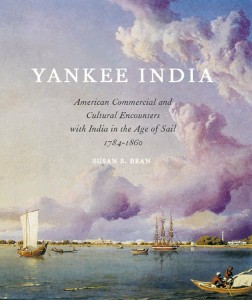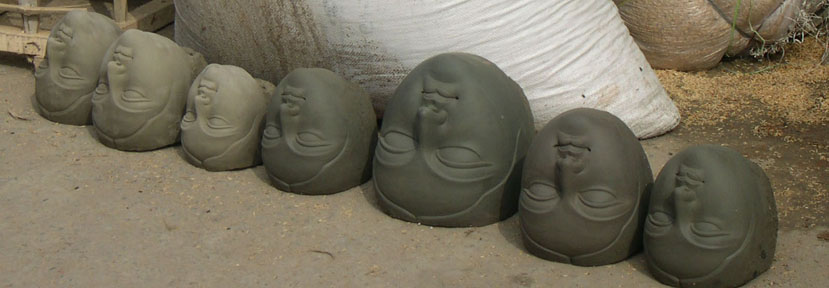 To order from click on Amazon, or PEM.
To order from click on Amazon, or PEM.
Built around mariners’ journals of their pioneering voyages, “Yankee India” charts the early development of commercial and cultural relations between the United States and India in the Age of Sail. The end of colonial rule in 1783 had given American merchants and ship owners the freedom to trade in Asia. Voyages from ports along the eastern seaboard were the first American links to the distant and exotic culture of India. Mariners’ journals and letters speak of encounters with vastly different ways of life that sometimes challenged and sometimes reinforced ideas about decorum, religion, and morality and that influenced attitudes toward imperialism, legitimate rule, and free trade. Material embodiments of India at the time – prints, paintings, and figurines depicting Indian scenes and people; “hubble-bubbles”, “idols”, fans and other souvenirs; as well as goods like bandannas, palampores (bed covers), and shawls – augment and illustrate the story. Previously untapped archives and collections of the Peabody Essex Museum, whose founders were captains and supercargoes in the Asia trade, provide the principal resources. These first encounters between the United States and India in the Age of Sail laid the foundation for American views of India and contributed to the development of American and Indian national and cultural sensibilities. “Yankee India” brings this important but little known episode to a wide range of readers interested in the histories of the United States and India, and in the impacts of intercultural encounters.
5 Star review on Amazon: This book does a rare and fine job of leveraging the artifacts and paintings of a museum — supplemented by highly relevant paintings from other sources — and making the period to which the pieces relate come alive. Admittedly, as a Bostonian, I may have a special susceptibility to the subject matter, but the juxtaposition of the background historical material against the narratives of individual mariners makes a very attractive and instructive whole. Among the interesting facts to emerge from the book are the origin of the phrase Boston Brahmin. Although we know it was coined by Oliver Wendell Homes, Sr. in Autocrat of the Breakfast Table, the influence was direct from the Yankee trade with India. Although New York had long eclipsed Boston and Philadelphia as major ports for maritime trade, nonetheless Boston, Salem and Newburyport were the prime ports for the India trade, which began after the Revolutionary War (because the monopoly of the British East India Company no longer held for American traders). Perhaps the most fascinating part is near the end of the book, where a young Mr. Blood describes a walk around Calcutta, including all of the sights, smells and emotions one would encounter.
From Library Journal
Copyright 2001 Reed Business Information, Inc.
Other reviews
“a handsome book, profusely illustrated…a landmark contribution …to the study of … Indo-American contacts in … trade, art and cultural/religious ideas.” — India Abroad, June 22, 2001
